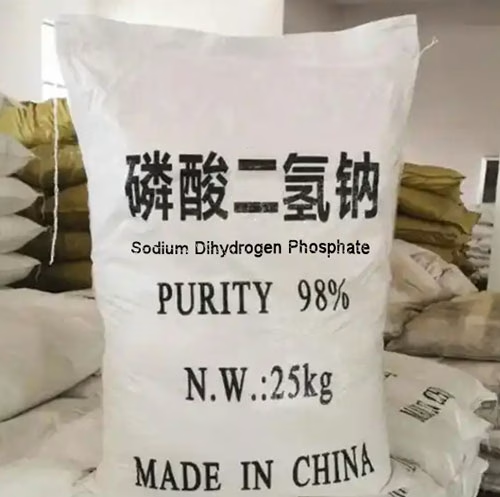I. Introduction
Sodium dihydrogen phosphate , also known as acid sodium phosphate, is a commonly used food additive, which is often used as an acidity regulator in the processing of brewing, dairy products and other food products, which can neutralize the acidity of food products and make the products more stable and tasty. In meat products, sodium dihydrogen phosphate is used as a binding agent and stabilizer, which can improve the texture and taste of meat products and prevent minced meat products from loosening or deforming during processing. This article will introduce the use method of disodium phosphate in terms of the form of use and dosage.

II. Forms of use
Sodium dihydrogen phosphate can be used in food either alone or in combination with other phosphates.
a. Individual use
When used alone in food, sodium dihydrogen phosphate is mainly used as acidity regulator and bulking agent. It can regulate the pH of food, improve the taste and flavor of food, and it can make food expand during the heating process, improving the fluffiness and texture of food. For example, when making bakery products, sodium dihydrogen phosphate is usually added to water to dissolve first, and then added to the dough to achieve better results.

b. Compound use
Sodium dihydrogen phosphate can also be used in complexes with other phosphates in the processing of meat and aquatic products as a water retention and rehydration agent. Click for Compound phosphates formula.
III. Sodium dihydrogen phosphate dose
The amount of food grade sodium dihydrogen phosphate used in foods varies depending on the specific food type.
- Condensed Milk: The maximum dosage used for condensed milk is 0.5g/kg.
- Chocolate products: In the U.S., the maximum use level of sodium dihydrogen phosphate for chocolate products is 0.4%~0.8%.
- Light condensed milk: the maximum use level is 0.1g/kg.
- Beverages: The maximum use level is 0.03%~0.1g/kg.
- Sauces and toppings: Maximum use level: 0.14%~0.25g/kg.
- Fortified cereals: Maximum use level is 0.5%~1.0g/kg.
- Macaroni and fortified macaroni: the maximum use level is 0.5%~1.0g/kg.
- Ham and meat: The maximum use level is 5.0g/kg for storage in salting solution and about 0.5% for minced ham.
- Bread: Maximum use level is 3.0g/kg.
- Cookies: Maximum use level is 3.0g/kg.
- Mixed grain flour: Maximum use level is 5.0g/kg.
- Batters (e.g. tor batter for fish and poultry): Maximum use level is 5.0g/kg.
The amount of sodium dihydrogen phosphate used should be based on the recipe and process requirements of the specific food, not too much or too little. Excessive use will lead to over-acidic food, while too little will not be able to play the role of regulating pH.
IV. Conclusion
Sodium dihydrogen phosphate can be a very common food additive due to its acidic, preservative, taste-improving and food quality stabilizing properties. It can be used either alone or in combination with other phosphates. When used, the dosage should be determined according to the recipe and process requirements of the specific food, not too much or too little. In addition, in order to ensure food safety and consumer health, sodium dihydrogen phosphate food additives should be used in strict accordance with the provisions of national food safety standards.
Extended reading:
Breif introduction to Sodium dihydrogen phosphate dihydrate
Sodium dihydrogen phosphate anydrous vs sodium dihyrogen phosphate

